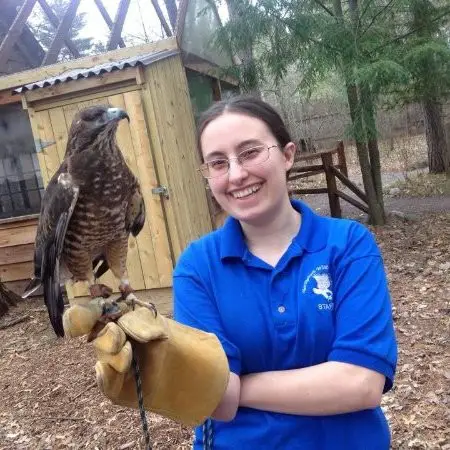Virginia, a state in the southeastern United States, boasts a rich avian diversity that captivates bird enthusiasts and nature lovers alike. The varied ecosystems within Virginia, ranging from coastal areas to mountainous terrains, create an ideal habitat for a wide array of bird species. Along the Chesapeake Bay, one can witness the graceful flights of ospreys and bald eagles, showcasing the state’s commitment to conservation efforts as these majestic raptors have made a remarkable comeback in recent years.
The lush woodlands of Virginia resonate with the melodic calls of songbirds, such as the vibrant cardinal and the elusive wood thrush. The Great Dismal Swamp, a unique wetland area, provides refuge for waterfowl like herons, egrets, and ducks. Birdwatchers flock to Shenandoah National Park, nestled in the picturesque Blue Ridge Mountains, where warblers, hawks, and vultures soar through the skies. Virginia’s dedication to preserving its natural habitats and promoting bird-friendly initiatives has not only sustained its diverse avifauna but has also turned the state into a birdwatcher’s paradise, offering a harmonious blend of scenic beauty and ornithological wonder.
8 Types of Owls in Georgia
Virginia’s diverse landscapes offer a suitable home for various owl species, contributing to the state’s rich biodiversity. Owls, with their nocturnal habits and distinct calls, play a crucial role in maintaining ecological balance. These birds of prey are well-adapted to Virginia’s wooded areas, where they find ample shelter and hunting grounds.
8 Types of owls in Virginia
Great Horned Owl
Introduction:
The Great Horned Owl (Bubo virginianus) stands out as one of the most iconic owl species in Virginia, showcasing distinctive features and a fascinating lifestyle. Let’s delve into the identification, appearance, habitat, diet, and population of these majestic creatures.
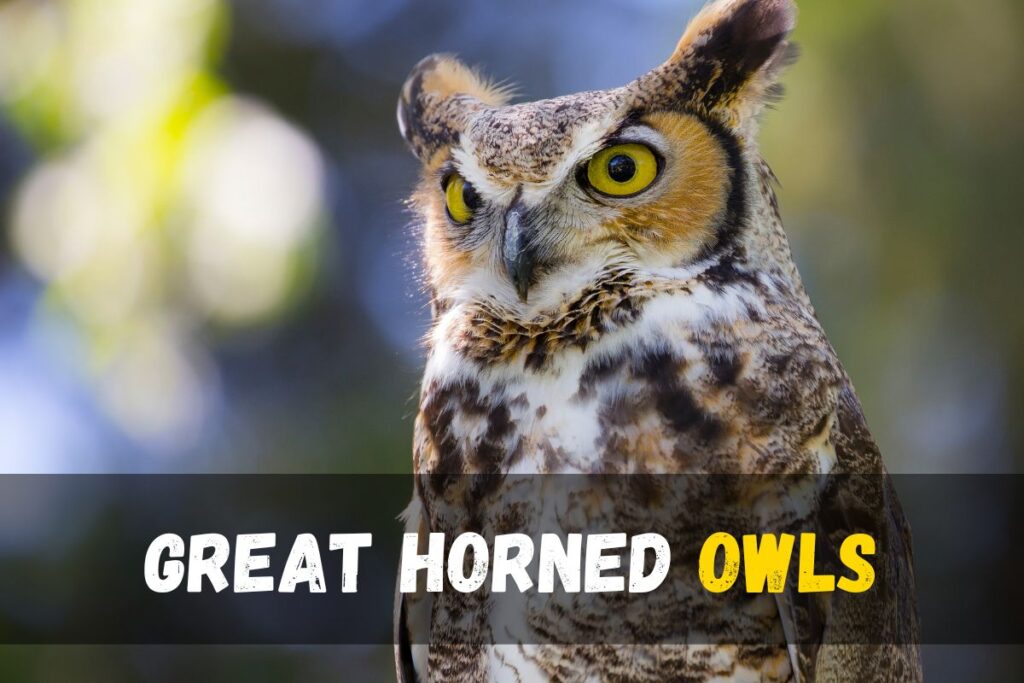
Identification:
The Great Horned Owl is easily recognizable by its large size, ranging from 17 to 25 inches, with a wingspan of 3 to 5 feet. Named for its prominent tufts, often mistaken for horns, these tufts, known as plumicorns, contribute to their remarkable appearance. Their plumage is mottled greyish-brown, with a reddish-brown or grey facial disc and a white throat patch. Notably, their vocalizations are a combination of hoots, screeches, growls, mews, and squawks.
Where to Look for Them:
Great Horned Owls are year-round residents in Virginia, adapting to a variety of habitats. They are commonly found in deciduous and evergreen forests, new forests with clearings, open areas, orchards, farmlands, parks, and quiet suburban areas. Look for them perched around woodland and forest edges, showcasing their preference for elevated positions.
Appearance:
These owls are big and bulky, with ear tufts and fine barring on their underparts. The facial disc, a broad circle of feathers around their face, aids in funneling sound towards their ears. The coloring and patterns of their plumage serve as effective camouflage. Males and females look similar, but females are larger, and juveniles have distinctive white, cinnamon, or gray fluffy feathers.
Habitat:
Great Horned Owls exhibit remarkable adaptability, residing in various environments from forests and woodlands to deserts and urban areas. In Virginia, they nest in old stick nests of other large birds, on ledges, and in diverse situations. Their strong talons exert considerable grip, requiring 28 pounds of pressure to open once closed.
Diet:
These formidable predators have a diverse diet, consuming over 200 species of mammals and around 300 bird species. Their prey includes rodents, lagomorphs, ground-feeding birds, invertebrates, reptiles, amphibians, fish, and carrion. They hunt nocturnally, displaying impressive hunting techniques such as perching, ambushing, swooping down from above, or chasing prey on the ground.
Population:
Historically, Great Horned Owls faced intense hunting, and indirect poisoning by pesticides targeted at their prey posed a threat. While they are highly adaptable and have a wide range, surveys indicate a decline in populations. Conservation efforts are crucial to ensure the sustained presence of these awe-inspiring creatures in Virginia’s diverse ecosystems.
Barred Owl
Identification
The Barred Owl, scientifically known as Strix varia, is a distinctive owl species found in Virginia. Recognizable by its round head, dark eyes, and lack of ear tufts, this large owl boasts a unique barred plumage with brown upperparts featuring white bars and pale underparts adorned with dark streaks. Notably, its call, a series of eight hoots resembling “who-cooks-for-you, who-cooks-for-you-all,” serves as a key identification feature.
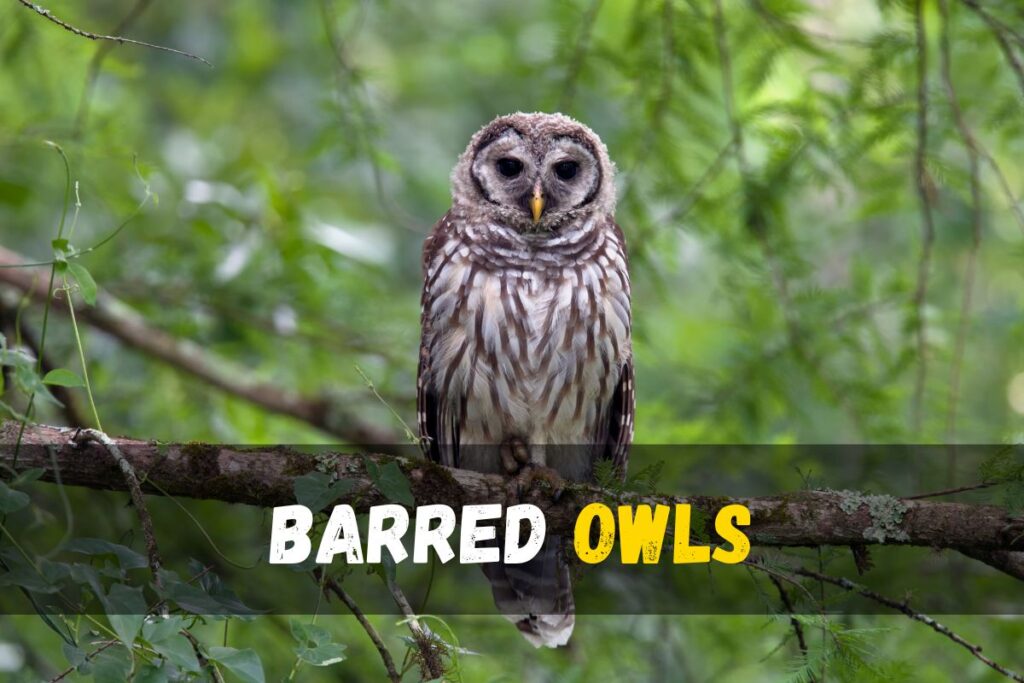
Where to Look for Them
Barred Owls inhabit various environments in Virginia, including mature deciduous and mixed forests, coniferous forests, forest edges, semi-open woodlands, and large parks with old trees. They are commonly found near water bodies, swamps, and lake shores. The owls are adaptable to suburban parks as long as there is sufficient tree cover, and they may occupy nest-boxes when available.
Appearance
With a wingspan ranging from 38 to 49 inches and a size of 16 to 25 inches, the Barred Owl is a medium-large owl species. Its physical characteristics include a rounded head, large, dark eyes, and a pale facial disk with faint markings. The plumage consists of brown and white, allowing it to blend seamlessly with tree bark and foliage. Notably, the face is whitish-grey, and the owl has feathered legs, yellow feet, and black talons.
Habitat
Barred Owls thrive in diverse habitats, showcasing their adaptability to dense forests, swamps, and wooded areas near water bodies. In Virginia, they are present year-round, with mature, old forests—either evergreen or deciduous—being their preferred nesting sites. Tree cavities, including old holes of ravens, crows, or hawks, serve as their nesting spots.
Diet
Barred Owls are skilled hunters with a diverse diet that includes small mammals like mice, squirrels, and rabbits, as well as birds, amphibians, and invertebrates. They hunt primarily at night, using their keen eyesight and hearing to locate prey. The distinctive call, resembling “who-cooks-for-you,” echoes through the woods during their nocturnal activities.
Population
Barred Owls are a common and frequently observed owl species in Virginia. They are present year-round, with observations peaking around April. These territorial birds tend to stay in the same area, establishing nests in tree cavities or abandoned nests of other large birds. Their adaptability to various habitats contributes to their sustained presence in the state.
Barn Owl
Identification:
The barn owl, scientifically known as Tyto alba, is a distinctive medium-sized owl found in Virginia. Recognizable by its heart-shaped facial disk, it has a white, speckled plumage, and it is often associated with monikers like the demon owl, ghost owl, and death owl due to its peculiar appearance and eerie call.
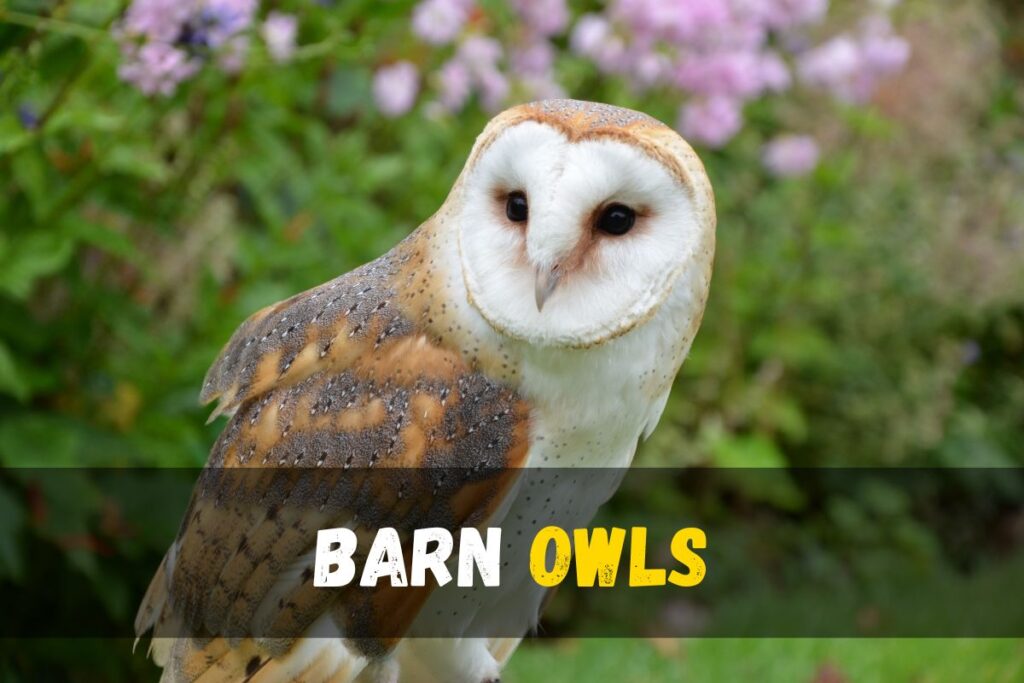
Where to Look for Them:
Barn owls can be found year-round in open habitats throughout Virginia. They inhabit various environments, including grasslands, farmlands, open woodlands, and woodland edges. They are known to use old buildings like church towers, farmhouses, and barns for nesting and hiding during the day. Additionally, barn owls are tolerant to human presence and may even use nest boxes if available.
Appearance:
The barn owl is a medium-sized owl with a heart-shaped face, measuring around 13 to 15 inches in size. Its upperparts are rusty-brown with dark patches, while the face and underparts range from cream to white. It possesses slender, feather-covered legs and expansive, elongated wings, allowing for swift and nimble maneuvers.. The American Barn Owl (Tyto furcata) is slightly smaller, measuring around 14-20 inches, with a unique white or pale plumage.
Habitat:
Barn owls are open country specialists, preferring farmland, grasslands, and prairies. They are adaptable, nesting in various locations, including barns, old buildings, tree holes, and nest boxes. However, their population faces challenges due to habitat loss, especially from intensive agriculture.
Diet:
These owls are nocturnal hunters, primarily feeding on small mammals such as voles, mice, rats, and shrews. They also consume insects, lizards, amphibians, bats, and birds. Barn owls have exceptional hearing and keen night vision, employing a unique hunting technique called “listening roosting” to locate prey.
Population:
The barn owl is one of the most widespread bird species globally, present on every continent except Antarctica. While they are found year-round in Virginia and the United States, localized populations face decline due to habitat loss, vehicle collisions, and indirect poisoning from pesticides. It is essential to address these challenges to ensure the conservation of this valuable species.
Eastern Screech Owl
Identification
The Eastern Screech Owl, scientifically known as Megascops asio, is a small nocturnal owl found in Virginia. Identifying this species is often best accomplished through their distinctive high-pitched trill, which serves as a key characteristic. They are relatively small, measuring between 6.5 to 10 inches in height, with a wingspan ranging from 18 to 24 inches. Notably, Eastern Screech Owls exhibit two color morphs: a grey phase and a rusty-brown phase, resembling the closely related western screech owl.

Where to Look for Them
Eastern Screech Owls inhabit a variety of environments in Virginia, including mixed woodlands, deciduous forests, riparian woods, orchards, parks, and gardens. They have a remarkable adaptability to urban and suburban areas, often nesting in trees close to human habitations. To spot them, pay attention to their whining call at night, and look for them roosting in shrubs or dense foliage.
Appearance
These owls have a distinctive appearance, with a stocky build, broad wings, and a short tail. They feature prominent ear tufts, yellow eyes, and a yellowish bill. Their plumage is patterned with streaked underparts, and their legs are feathered. Eastern Screech Owls also come in two color variations – grey and rusty-brown.
Habitat
Eastern Screech Owls are highly adaptable, residing in diverse wooded environments such as mature forests, open woodlands, suburban parklands, and old orchards. They nest and roost in tree cavities and readily accept nest boxes. Their ability to thrive in developed areas showcases their resilience as a species.
Diet
These nocturnal predators are opportunistic hunters, preying on small mammals, insects, birds, reptiles, and amphibians. Their diet adapts seasonally, with a focus on invertebrates during the breeding season and small birds and mammals in winter. They hunt primarily from a perch, displaying a keen ability to watch and listen for prey before swooping down with their sharp talons.
Population
The Eastern Screech Owl is a resident species in Virginia, present year-round with potential peak activity from mid-July to mid-October. Despite their year-round presence, spotting them can be challenging due to their excellent camouflage in trees. Their population is distributed throughout the state, with higher numbers observed in the Blue Ridge Mountains and surrounding areas.
Short-Eared Owl
Identification:
Short-eared owls (Scientific name: Asio flammeus) are medium-sized owls known for their distinctive features. They possess a rounded head with small ear tufts, making them easily recognizable. Their plumage is mottled brown, buff, and white, with dark streaks on the breast. Notably, they have a whitish face with a brown facial disc edged with a pale rim, complemented by piercing yellow eyes encircled by dark eye patches. Unlike other owl species, their ear tufts are short, contributing to their unique appearance.
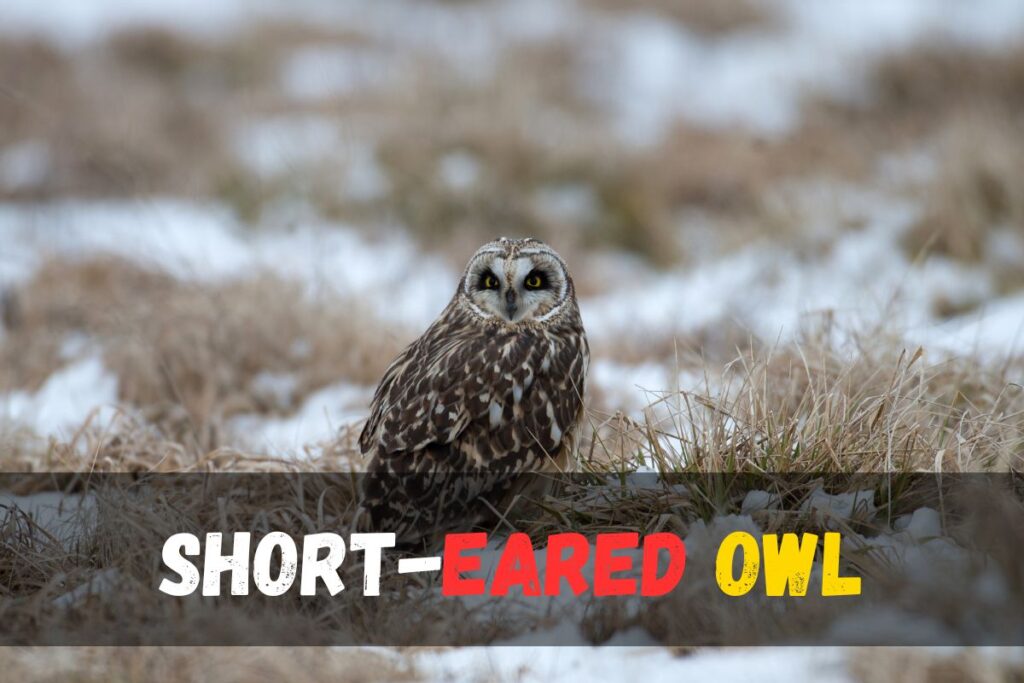
Where to Look for Them:
Short-eared owls can be found in Virginia, particularly during the winter months. They are often observed in open areas such as grasslands and fields, and they tend to stay near the ground or on low tree limbs. The best time to spot them is during the winter, from November to April. Look for them actively hunting during the day and at dusk over grassland areas.
Appearance:
Measuring approximately 13-17 inches in length, with a wingspan of 33-40 inches, short-eared owls are medium-sized birds. Their flight presents rounded wings with dark wingtips, and their coloration varies from light brown to dark, providing effective camouflage in different habitats. Both males and females look similar, but females are slightly larger and usually darker and buffier.
Habitat:
Short-eared owls prefer open landscapes, including grasslands, meadows, sparse woodlands, marshes, and dunes. They are widespread and can be found on all continents except Antarctica. In Virginia, they are winter residents, with a presence from November to April. They nest on the ground in dense vegetation, showcasing their adaptation to various environments.
Diet:
The primary diet of short-eared owls consists of rodents such as mice and voles. They exhibit diurnal behavior, being primarily active during the daytime. Their hunting technique involves listening for rustling sounds made by prey in the grass or snow, followed by a swift swoop to catch it with their sharp talons. They may also consume birds and their nestlings.
Population:
Short-eared owls have a wide distribution, being found almost everywhere except Australia and Antarctica. They are known for their long-distance migrations, with populations in decline due to habitat loss. In Virginia, they are wintering species, and the best chances to spot them are from mid-December until early February. They exhibit fascinating behaviors such as playing dead or doing a “broken-wing” display when threatened near their nests.
Long-Eared Owl
Identification:
The Long-eared Owl (Asio otus) is a distinctive medium-sized owl found in Virginia. Recognizable by its prominent ear tufts, dark brown eyes, and yellow beak, it has a mottled plumage with brown, grey, and buff colors. Its surprised expression is accentuated by a facial disc and mustache-like feathers around the bill.
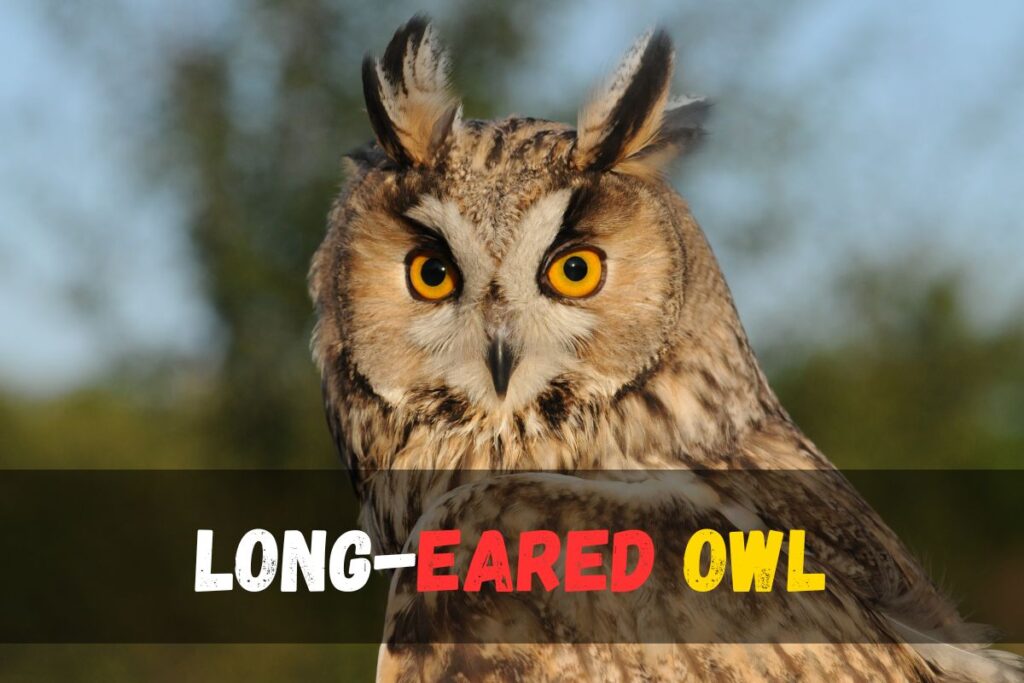
Where to Look for Them:
These elusive owls prefer dense coniferous or deciduous forests with a mix of trees and open fields nearby. In Virginia, they can be spotted year-round, particularly during winter months. Look for them in meadows, fields, and open grasslands where they display exceptional camouflage skills.
Appearance:
Measuring 13-16 inches in length with a wingspan of 35-39 inches, Long-eared Owls have a slender and medium-sized build. Their large ear tufts, usually pointing straight up, give them a distinctive appearance. They have large yellow eyes, an orange facial disc, and rounded wings. Their upperparts are mottled with gray, brown, white, and buff, while their tails are white with dark brown barring.
Habitat:
Long-eared Owls thrive in various habitats, including forests, woodlands, grasslands, shrublands, farmlands, orchards, parks, cemeteries, and gardens. In Virginia, they are present year-round, showcasing their adaptability to different environments.
Diet:
Primarily nocturnal hunters, Long-eared Owls feed on small mammals such as mice, voles, and shrews. They also consume birds, reptiles, and insects. Their exceptional hearing abilities and silent flight enable them to locate and capture prey with ease.
Population:
Long-eared Owls are not very common in Virginia, but they are winter birds and are occasionally spotted from November to mid-April. Populations may be declining, possibly due to various factors affecting their habitat and food sources.
Northern Saw-Whet Owl
Identification:
The Northern Saw-Whet Owl, scientifically known as Aegolius acadicus, is one of the smallest owl species found in North America. These owls are about 7-8 inches in length, with a distinctive rounded head, large yellow eyes, and dense brown and white plumage. They are often recognized by their unique call, resembling the sound of a saw being sharpened. Northern Saw-Whet Owls have a white “V” shape on their faces, which contributes to their catlike appearance.
Where to Look for Them:
In Virginia, Northern Saw-Whet Owls are predominantly found in the northwest during winter and fall migration. They inhabit coniferous forests, especially during the breeding season, and can also be present in mixed woodlands. These elusive owls are known for their sedentary behavior, often perching in the same spot for extended periods. Listening for their distinctive whistly call is a key method for locating them.
Appearance:
With small brown bodies, large round heads, and bright yellow eyes, Northern Saw-Whet Owls are easily distinguishable. Their plumage includes brown or grayish upperparts with white spots, while the underparts exhibit pale coloring with heavy streaks. Notably, a white “bib” on their chest and a dark band across their belly are characteristic features.
Habitat:
Northern Saw-Whet Owls prefer dense coniferous forests, especially during the breeding season. They nest in tree cavities, often choosing locations previously used by woodpeckers. While primarily found in forested habitats, they may also venture into urban areas. During migration, they may be observed over large bodies of water.
Diet:
These nocturnal hunters primarily feed on small mammals like mice, voles, and shrews. Their sit-and-wait strategy involves perching on tree branches, relying on their exceptional hearing to detect prey by sound. Although rodents make up the majority of their diet, during migration, small songbirds may also become part of their menu.
Population:
In Virginia, Northern Saw-Whet Owls are present mainly during the fall and winter months, arriving in October and staying until April. They are not abundant, and their population is concentrated in specific regions, particularly the northern and western parts of the state. Habitat loss due to deforestation poses a threat to their population, especially in the southern Appalachian region.
Snowy Owl (Rare)
Identification:
Snowy Owls (Bubo scandiacus) are a rare and majestic species found in Virginia. These large owls are easily identifiable by their striking white plumage, round heads, and distinctive yellow eyes. Male Snowy Owls are mostly white, while females exhibit more brown markings. Juveniles, with heavily streaked brown plumage, are also occasionally seen.

Where to Look for Them:
Observing Snowy Owls in Virginia is a rare and thrilling experience. These owls are known to appear during unpredictable irruptions, large migrations of birds. Look for them in open habitats like fields, marshes, coastal dunes, lakeshores, and even airports. They may perch on rises, dunes, or open areas close to bodies of water.
Appearance:
Snowy Owls stand out with their large size, smooth rounded heads, and heavily feathered bodies. Their white plumage, speckled with black, distinguishes them from other owl species. While males are mostly white, females have additional brown markings. Juveniles exhibit extensive brown barring, especially on their bodies.
Habitat:
Snowy Owls are native to Arctic regions but spend their winters in open areas in Alaska, Canada, and the northern USA, including Virginia. They nest on elevated spots on the ground in the Arctic tundra. In Virginia, they can be found in diverse environments such as fields, marshes, and coastal dunes, resembling their Arctic habitat.
Diet:
These diurnal owls have a varied diet, primarily consisting of small mammals like lemmings, voles, and mice. They also consume birds, reptiles, and insects. Snowy Owls are skilled hunters, relying on their keen eyesight rather than acute hearing. Their hunting activity can occur during both day and night.
Population:
Snowy Owls are considered a vulnerable species, facing threats such as climate change affecting their habitat and prey availability. Their numbers have declined significantly, and they face risks during migrations and winter, including collisions with cars, powerlines, and fences. Monitoring their population dynamics is challenging due to the remote nature of their breeding habitat.
Types of eagles in Florida
FAQ’S
What is the most aggressive owl species?
Barred owls and great horned owls are the most often reported for aggressive behavior when defending their territory, homes, mates, or young. Hence, when asked about the most aggressive owl species, it is noteworthy that Barred owls and great horned owls are often recognized as the most assertive. This is particularly evident when they are safeguarding their territory, nests, partners, or offspring. How to Find an Owl in Virginia?
To find an owl in Virginia, start by researching native species like the Eastern Screech Owl or Barred Owl. Learn about their nocturnal habits and distinctive calls. Explore wooded areas and listen for owl calls during the evening. Use binoculars and a flashlight with a red filter for better observation, and consider joining local birdwatching groups for valuable tips and recent sightings. Patience and respect for wildlife are key when trying to spot these elusive creatures in their natural habitats
What do owls eat in Virginia?
Owls in Virginia primarily consume a diet consisting of mice, shrews, voles, and small birds. Their unique curved downward beaks distinguish them from other raptors with protruding beaks. Adult owls tend to eat their prey whole and later regurgitate indigestible components such as bones and feathers in the form of pellets. This feeding behavior is consistent with their natural hunting instincts, making these particular types of prey common among owls in Virginia.


